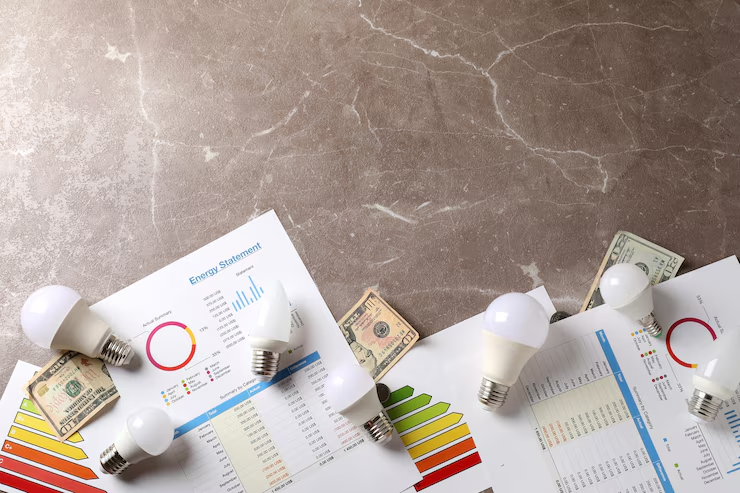Energy Efficiency Revolution: Will Your Utility Survive?
The air crackled with tension. Not the static electricity of a poorly insulated building, but the palpable anxiety humming in the conference room. Around the mahogany table sat the usual suspects – seasoned energy efficiency pros, their faces etched with the familiar blend of exhaustion and grim determination. Across from them, the CEO of a mid-sized utility, Mr. Henderson, nervously adjusted his tie. “Gentlemen,” he began, his voice strained, “we’re bleeding money. The writing’s on the wall. Energy consumption is plummeting.”
This wasn’t a lament; it was a battle cry. The energy efficiency revolution, once a slow-burning ember, is now a raging wildfire, transforming the very landscape of our industry. Smart thermostats whisper data to the cloud; building-integrated renewables gleam on rooftops; and customers, empowered by information and driven by cost savings, are actively demanding change. The familiar comfort of predictable energy demand is dissolving before our eyes, replaced by a dynamic, unpredictable future.
Feel the shift – the ground trembling beneath the feet of traditional utility models. The scent of innovation hangs heavy in the air, a sharp contrast to the stale odor of outdated infrastructure. The question isn’t if this revolution will continue, but how your utility – your business – will navigate this seismic upheaval. Will you adapt, innovate, and thrive? Or will you be left behind, a relic of a bygone era, as the world embraces a future powered by efficiency? This isn’t just about numbers on a spreadsheet; it’s about the future of our businesses, our communities, and our planet. Let’s explore how to survive – and even prosper – in this electrifying new world.
The building energy efficiency market is a vibrant, dynamic landscape, a bustling construction site where innovation and challenge wrestle for dominance. Let’s peek behind the scaffolding and examine the forces shaping its future.

Positive Trends: A Rising Tide Lifts All Boats (Mostly)
- The Green Imperative: The world is waking up to the climate crisis. This isn’t a whisper anymore; it’s a roar demanding change. Governments are enacting stricter building codes, incentivizing energy efficiency with tax breaks and rebates, and pushing for carbon neutrality targets. This creates a massive market opportunity. Consider Schneider Electric, a global energy management and automation company, who’ve successfully positioned themselves as leaders in smart building technologies, capitalizing on the rising demand for sustainable solutions. Their success speaks volumes about the power of aligning with this global trend.
- Technological Advancements: The digital revolution is transforming building energy efficiency. Imagine buildings that “breathe,” intelligently adjusting their energy consumption based on occupancy and weather conditions. This isn’t science fiction; it’s happening now with technologies like smart thermostats (Nest, for example), building management systems (BMS), and AI-powered energy optimization platforms. This creates an exciting landscape for innovative startups and established players alike, providing opportunities for both hardware and software solutions.
- Data-Driven Insights: The era of guesswork is over. Smart sensors and data analytics are giving building owners unprecedented insight into their energy consumption patterns, revealing hidden inefficiencies and opportunities for improvement. Companies are developing platforms that not only monitor energy use but also predict future consumption, allowing for proactive maintenance and optimized energy management.
Adverse Trends: Navigating the Storm
- High Initial Investment Costs: Implementing energy-efficient technologies can be expensive upfront. This can be a significant barrier, particularly for smaller building owners who may lack the capital for large-scale renovations. This requires innovative financing solutions and a focus on demonstrating a clear return on investment.
- Lack of Skilled Workforce: The industry needs skilled professionals to design, install, and maintain these complex systems. A shortage of qualified technicians and engineers can slow down adoption and increase costs. Businesses need to invest heavily in training and development to address this skills gap.
- Interoperability Challenges: The building energy efficiency market is fragmented, with various technologies and systems from different vendors. This lack of interoperability can create integration headaches and limit the effectiveness of energy management strategies. The industry needs standardization efforts to facilitate seamless integration and data sharing.
Actionable Insights: Charting a Course to Success
- Embrace digitalization: Invest in data analytics, AI, and IoT technologies to optimize energy management and provide valuable insights to clients.
- Develop innovative financing models: Offer flexible financing options, such as performance-based contracts, to make energy efficiency upgrades more accessible.
- Focus on workforce development: Invest in training programs to build a skilled workforce capable of installing and maintaining advanced energy-efficient systems.
- Collaborate and standardize: Work with industry partners to promote interoperability and standardization, creating a more efficient and integrated ecosystem.
The future of the building energy efficiency market is bright, but it’s not without its challenges. Companies that proactively adapt to these trends, embrace innovation, and prioritize collaboration will be the ones who thrive in this dynamic and increasingly important sector. The time to act is now. The world is watching.
Healthcare: At the sprawling Mercy Hospital, the air conditioning hummed a constant, money-draining tune until they installed a smart building management system. Imagine the scene: before, sweat beaded on the brows of overworked nurses in sweltering hallways. Now, sensors subtly monitor occupancy, adjusting the temperature in real-time. “It’s like night and day,” says Sarah, the head nurse, her voice brimming with relief. “We’ve seen a significant drop in energy bills, and our staff are happier and more productive.” The system even predicted a malfunctioning chiller, preventing a costly emergency repair – a win for both the bottom line and patient care.
Technology: In Silicon Valley’s bustling tech hub, a data center—the beating heart of a major social media company—faced a relentless battle against heat. Rows upon rows of servers generated a heat that felt like a furnace. The solution? A sophisticated liquid cooling system, a symphony of pipes and pumps humming a quiet, efficient tune. This whisper-quiet system replaced the roaring air conditioning units, saving millions annually while improving server performance. “The data center used to sound like a jet engine,” chuckled Mark, the head engineer, “Now, it’s so quiet you could hear a pin drop.”
Automotives: A major auto manufacturer, facing pressure to reduce its carbon footprint, transformed its sprawling assembly plant. They implemented a comprehensive energy audit – akin to a thorough medical exam, revealing areas of energy waste like outdated lighting and inefficient heating systems. The changes were dramatic: LED lighting bathed the factory floor in a crisp, cool light, replacing the harsh, energy-guzzling fluorescents. The new lighting not only slashed energy consumption but also improved worker visibility and morale.
Manufacturing: At a bustling textile factory, the energy bills were a constant source of stress for the plant manager, David. The old boilers felt like they were consuming the very lifeblood of the company. His solution? A state-of-the-art combined heat and power (CHP) system. This system operates like a perfectly orchestrated ballet, transforming fuel into both electricity and heat, maximizing energy efficiency and minimizing waste. “It’s like we’ve harnessed the power of a tiny, efficient nuclear reactor,” said David, a wry smile playing on his lips. “Our energy costs plummeted, and our production hasn’t skipped a beat.”
“Alright team,” Sarah, head of GreenBuild Solutions, announced in the weekly meeting, “we need to ramp up our AI-driven energy auditing. Since January, our clients are demanding faster, more precise assessments. Our new partnership with EnergyAI, sealed last quarter, is key here. Their predictive modelling is a game-changer – we can identify hidden energy drains and recommend optimal retrofits with unprecedented accuracy, boosting client satisfaction and securing more contracts.”
John, the marketing director, chimed in, “And we’re seeing great traction with our revamped online content. Since we launched the ‘Energy Efficiency for Dummies’ blog series in March, organic website traffic has doubled. Those simple, clear explainer videos on HVAC optimization are really resonating with building managers, driving inbound leads.”
“But we can’t just rely on organic,” countered Maria, the sales VP. “Our recent acquisition of EcoTech, finalized in June, significantly expanded our service offering into smart building technologies. We now offer a complete end-to-end solution – from auditing to installation and ongoing management of smart thermostats and lighting. This integrated approach is attracting larger clients who value a one-stop shop.”
“Exactly,” Sarah agreed. “And let’s not forget our targeted advertising campaigns. We’re focusing on LinkedIn and industry events, using case studies showcasing successful implementations of EcoTech’s systems. This highly specific targeting is converting leads much faster than our broader campaigns previously did.”
Later that day, Sarah reviewed the progress. The AI partnership had already boosted efficiency by 15%, the blog series was generating a steady stream of quality leads, and the EcoTech acquisition had secured three major contracts, surpassing their initial projections. “It’s a win-win,” she thought, “serving clients better while growing the business. This integrated approach is the future of building energy efficiency.”

Outlook & Summary: A Storm Brewing, A New Dawn Breaking
The building energy efficiency sector isn’t just evolving; it’s undergoing a metamorphosis. Over the next five to ten years, picture this: a landscape saturated with smart buildings, AI-driven energy management systems, and a ferocious competition fueled by plummeting renewable energy costs. Forget incremental improvements – we’re talking about a seismic shift. Remember the early days of the internet? The chaos, the uncertainty, the incredible potential? This is that moment for building energy efficiency.
This article peeled back the layers, revealing a stark truth: the utilities clinging to outdated models are facing a potential extinction event. While the broader energy efficiency services sector is diversifying – embracing EV charging, smart grids, and industrial efficiency – those focused solely on traditional building energy audits and retrofits risk being left behind. I envisioned a conversation with a seasoned utility executive, his face etched with a mixture of fear and grudging admiration as he admitted, “We’re not just competing with other utilities anymore; we’re competing with tech giants and nimble startups.”
The key takeaway? Adaptation isn’t a choice; it’s survival. This isn’t just about swapping out old boilers for heat pumps; it’s about embracing a holistic, data-driven approach, forging partnerships, and investing in innovation. Are you ready to be a captain navigating this storm, or will you be swept away by the tide of change? The future of building energy efficiency – and perhaps your own career – depends on the answers. Will you choose evolution or extinction?




